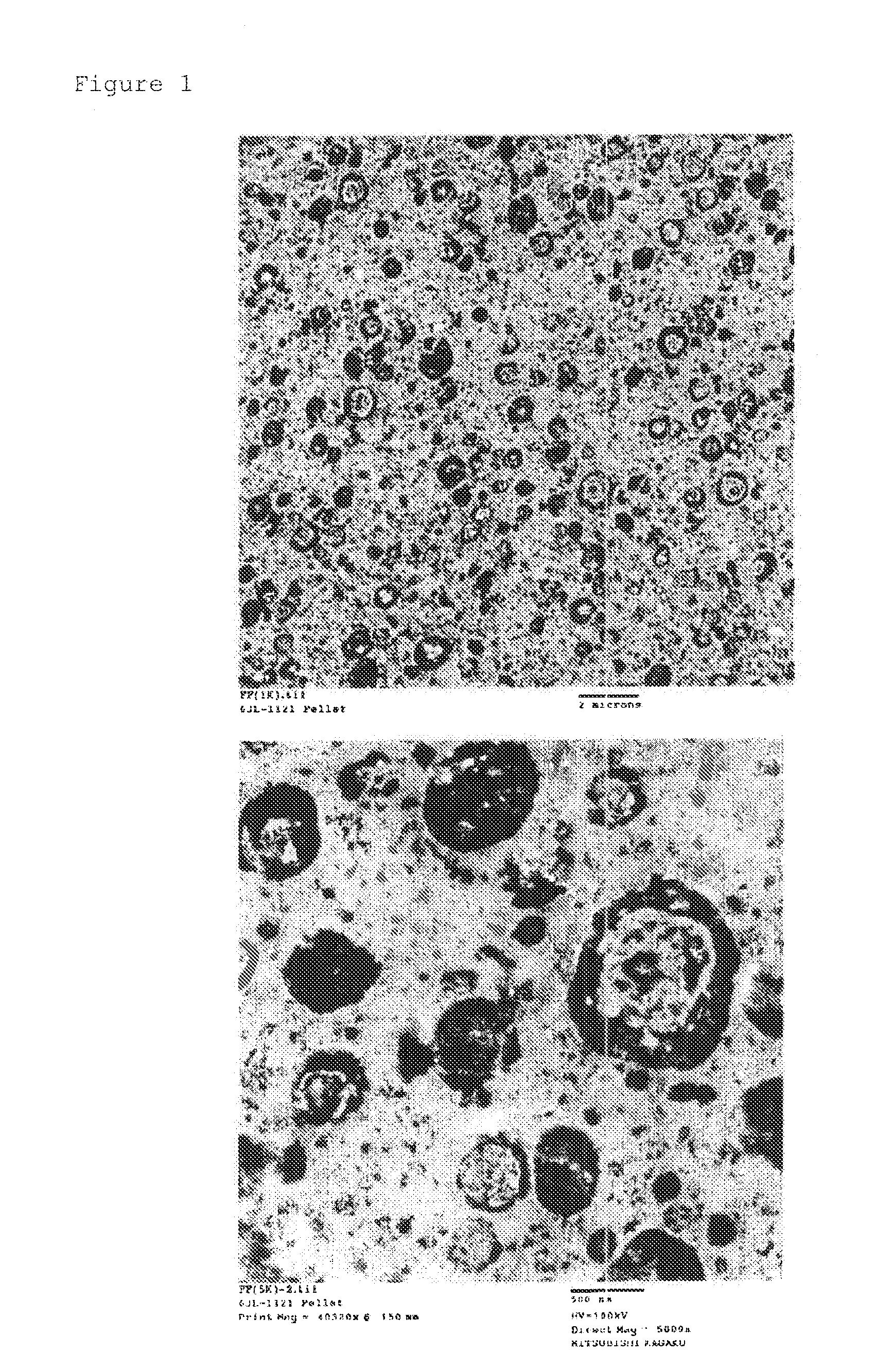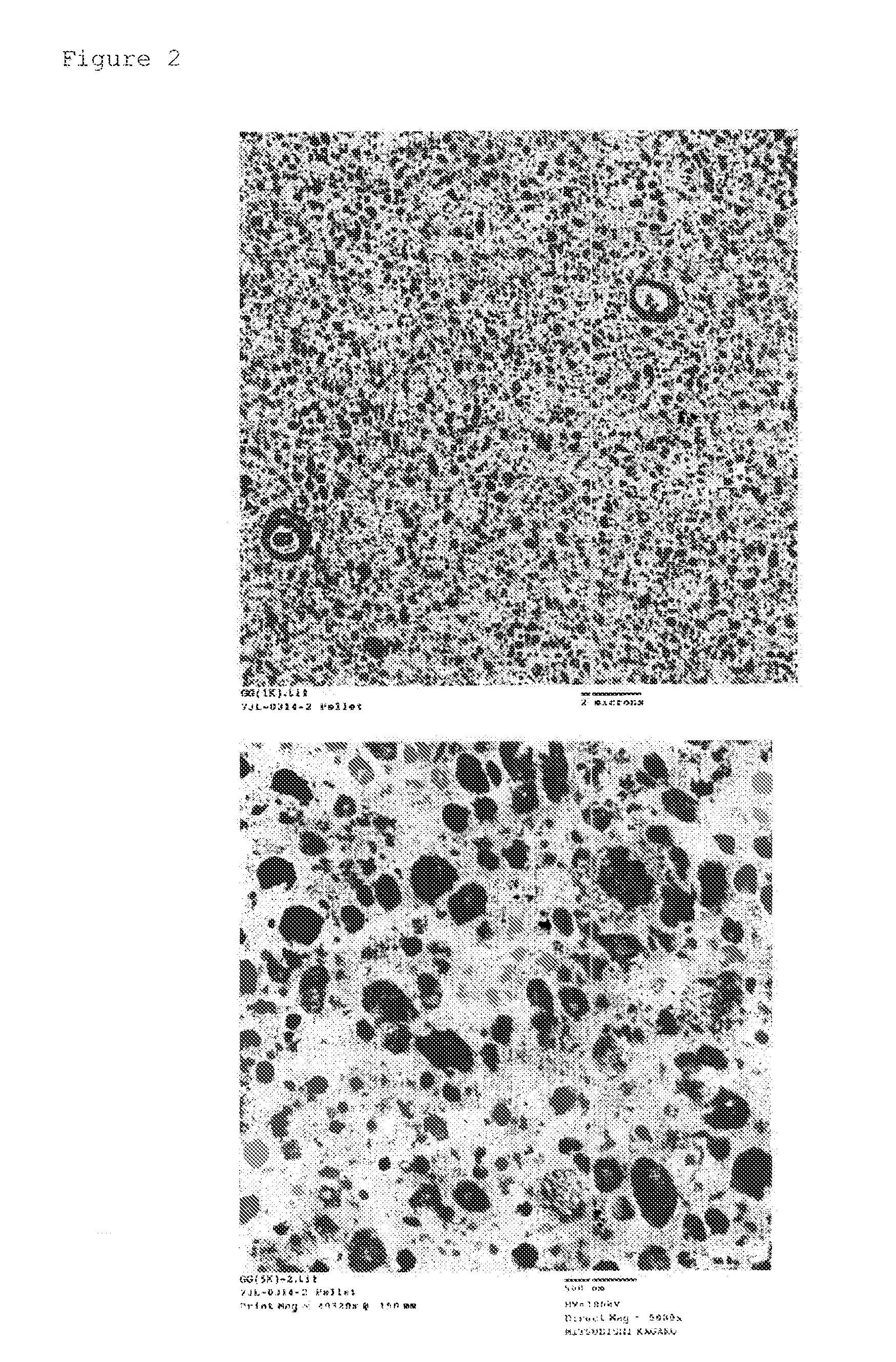Propylene-based polymer and method for producing the same, and propylene-based resin composition
a technology of propylene and polymer, which is applied in the direction of transportation and packaging, tyre parts, special tyres, etc., to achieve excellent mechanical properties, improve melt tension (mt) or melt fluidity, and improve the effect of mechanical properties
- Summary
- Abstract
- Description
- Claims
- Application Information
AI Technical Summary
Benefits of technology
Problems solved by technology
Method used
Image
Examples
examples
[0415]Explanation will be given below still more specifically on the present invention with reference to Examples, however, the present invention should not be limited to the following Examples, unless it is outside the gist thereof. It should be noted that property measurement, analysis etc. in the following Examples are in accordance with the following methods.
(1) Melt Flow Rate (MFR)
[0416]MFR was measured under the following condition, according to JIS K7201 A method, condition M.
[0417]Test temperature: 230° C., nominal load: 2.16 kg, die shape: a diameter of 2.095 mm and a length of 8.000 mm. Unit is g / 10 minutes.
(2) Weight Average Molecular Weight (Mw)
[0418]Mw was measured by a method described in the present description, with gel permeation chromatography (GPC).
(3) mm Fraction
[0419]It was measured by a method described in the present description, by using GSX-400, FT-NMR, manufactured by JEOL Co., Ltd.
(4) Elongational Viscosity
[0420]It was measured by a method described in the...
production example z-1
(i) Production of the Solid Catalyst Component (a)
[0456]Into a reactor with an inner volume of 50 L, equipped with a stirrer, after purging with nitrogen, 20 L of dehydrated and deoxidized n-heptane was introduced, and then 10 moles of magnesium chloride and 20 moles of tetrabutoxytitanium were introduced for a reaction at 95° C. for 2 hours, followed by lowering temperature to 40° C., introduction of 12 L of methylhydropolysiloxane (a viscosity of 20 centistokes) and further reaction for 3 hours, and then a reaction solution was taken out and a solid component generated was washed with n-heptane.
[0457]Subsequently, by using the reactor equipped with a stirrer, 5 L of dehydrated and deoxidized n-heptane was introduced into the reactor, and then the solid component synthesized above was introduced in an amount of 3 mol, in a magnesium atom equivalent. Then, into 2.5 L of n-heptane, 5 mole of silicon tetrachloride was mixed and introduced at 30° C. over 30 minutes, followed by raising...
production example z-2
[0468]The propylene-based block copolymer was produced according to Production Example 1, by using a catalyst and a polymerization method used in Production Example Z-1, except by changing molar ratio of hydrogen / propylene in the preceding stage polymerization step to 0.060, molar ratio of hydrogen / (propylene+ethylene) in the latter stage polymerization step to 0.0135, and ethyl alcohol to 1.4 times mol to triethylaluminum.
II. A Production Example of the Component (M)
PUM
| Property | Measurement | Unit |
|---|---|---|
| Temperature | aaaaa | aaaaa |
| Fraction | aaaaa | aaaaa |
| Percent by mass | aaaaa | aaaaa |
Abstract
Description
Claims
Application Information
 Login to View More
Login to View More - R&D
- Intellectual Property
- Life Sciences
- Materials
- Tech Scout
- Unparalleled Data Quality
- Higher Quality Content
- 60% Fewer Hallucinations
Browse by: Latest US Patents, China's latest patents, Technical Efficacy Thesaurus, Application Domain, Technology Topic, Popular Technical Reports.
© 2025 PatSnap. All rights reserved.Legal|Privacy policy|Modern Slavery Act Transparency Statement|Sitemap|About US| Contact US: help@patsnap.com



